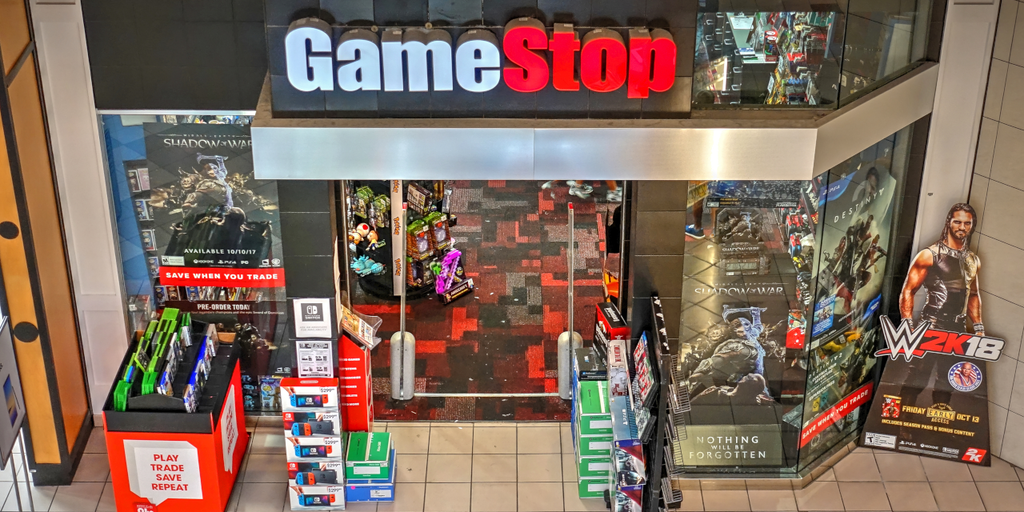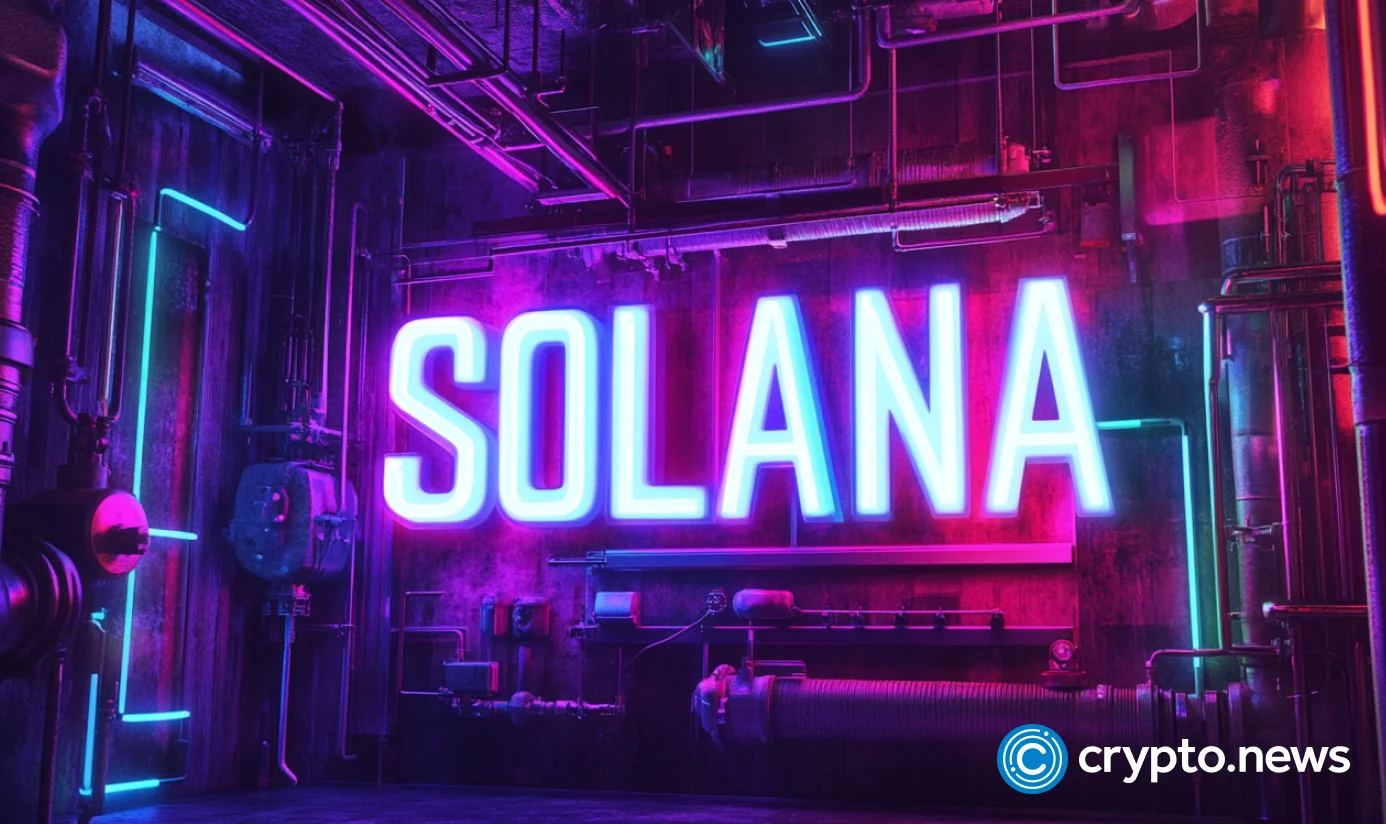Markets
GameStop Meme Stock Craze Prompted Market ‘Plumbing’ Changes, Says SEC Chair Gensler
Published
2 months agoon
By
admin

GameStop’s short squeeze in 2021 taught the Securities and Exchange Commission (SEC) several key lessons. Among those highlighted in a Monday speech by SEC Chair Gary Gensler was the need to modernize equity markets, in part by embracing shorter settlement times.
A retail-led movement to bet big against Wall Street short sellers caused GameStop’s stock price to spike nearly four years ago amid the “meme stock” craze. Forced to hold or sell shares skyrocketing in price, restrictions imposed by several brokerage firms blunted the rally that was later enshrined in stock market history and recounted in books and films.
Gensler, an unwavering critic of the digital assets industry, partly pinned the restrictions on a lack of market efficiency. Ultimately, a shift toward shorter settlement times—that experts say blockchains benefit from—improved upon mechanics that stifled some GameStop investors.
“Many everyday investors lost access to the market at a critical time,” Gensler said. “The longer it takes for a trade to settle—the slower the plumbing—the more risk our markets assume.”
When purchasing or selling a stock on a venue like the New York Stock Exchange, there is a delay between when the transaction is made and when it becomes fully processed across a series of intermediaries, including a broker-dealer, clearing agency, and exchange.
Notably, the SEC has accused crypto exchanges like Binance and Coinbase of fulfilling several of these roles at once, without proper registration, while facilitating securities transactions. Both companies have denied the regulator’s claims amid ongoing battles in federal courts.
Once conducted through paper checks and physical certificates, the settlement window for securities has been shortened with SEC rule changes over time. Commonly referred to as T+2, a two-day settlement window was reduced in May, making what Gensler said was “a real difference” for everyday investors.
At the same time, the shift to T+1 influenced the relationship between brokers, which match buyers and sellers, and clearinghouses that facilitate the exchange of securities and payments.
Margin calls from clearinghouses led some brokers to restrict purchases of GameStop stock during its famed short squeeze in 2021. But the “amount of margin, or collateral, that must be placed with the clearinghouse” was reduced significantly with T+1’s adoption, Gensler said.
Gensler’s GameStop reflection followed crypto-focused remarks from Federal Reserve Governor Christopher Waller last week. Discussing the merits of decentralized finance (DeFi), he described how intermediaries have historically provided value—but now face competition.
As reflected in the popularity of centralized crypto exchanges, Waller posited that DeFi could play a complementary role to existing financial markets, rather than replace legacy systems. Along those lines, he said distributed ledger technology (DLT) like blockchain could be an “efficient and faster way to do recordkeeping,” while smart contracts flatten trade structures.
“Smart contracts can effectively combine multiple legs of a transaction into a single unified act,” Waller said. “This can provide value, as it can mitigate risks associated with settlement.”
Companies like tZERO are building blockchain-based marketplaces for private securities. The Utah-based firm gained approval from the SEC and Financial Industry Regulatory Authority (FINRA) to operate as a custodian for digital assets sold as securities last month.
In early 2025, the firm plans to launch with a “full digitization” of its Series-A preferred equity. But Wall Street tastemakers have visions for a crypto-based market extending far beyond that.
BlackRock CEO Larry Fink hailed tokenization as the “next generation for securities” in 2022. Using a digital representation of an asset to conduct trades on a blockchain, he said the process would provide market participants with “instantaneous settlement” and “reduced fees.”
Alongside the crypto’s rise, financial firms have looked at other qualities inherent to blockchains, such as the 24/7 schedule that they operate under within the context of trading. Crypto markets don’t close, which can provide both opportunities and risks alike.
In April, the Financial Times reported that the New York Stock Exchange was exploring round-the-clock trading. The development would be a significant break from the exchange’s regular six-and-a-half hour trading window, extended as recently as 1985.
Edited by Andrew Hayward
Daily Debrief Newsletter
Start every day with the top news stories right now, plus original features, a podcast, videos and more.
Source link
You may like


Solaxy presale raises $4.5M for Solana Layer 2 solution


Elon Musk xAI Secures $6B To Boost Generative AI Expansion: Details


Metaplanet Bitcoin Reserves Grow With Fresh $61 Million Purchase


Investors turn to Lightchain AI 3000x potential after PEPE drop


Moonpay In Talks To Acquire Coinbase Commerce Rival Helio


The Satoshi Papers Explores The Role Of The State In A Post-Bitcoin World: An Interview With Natalie Smolenski
DeFi
Solana beats Ethereum in a key metric 3 months in a row
Published
10 hours agoon
December 23, 2024By
admin
Solana’s continued doing well in December, as meme coins helped it gain market share against Ethereum and other blockchains.
According to DeFi Llama, Solana’s (SOL) protocols in the decentralized exchange industry were the most active in December.
Its volume rose to over $97 billion, much higher than the $22.6 billion it handled in the same period last year.
Notably, it was the third consecutive month that Solana outperformed Ethereum (ETH), which has dominated the industry for years. Ethereum’s protocols had a volume of over $74 billion, while Base and Arbitrum handled $42 billion and $37 billion.

Solana also performed great in November, where its DEX networks had a volume of $129 billion, higher than Ethereum’s $70.6 billion. A month earlier, Solana handled volume of $52 billion, while Ethereum processed $41 billion.
Most of Solana’s DEX volume was because of Raydium (RAY), a network that handled coins worth $65 billion in the last 30 days. Orca handled $24 billion, while Lifinity, Pump, and Phoenix had volumes worth over $5.93 billion.
Solana’s DEX volume has jumped because of the meme coin industry, which has continued doing well this year. Solana has attracted thousands of meme coins this year, helped by the creation of Pump, the biggest token generator. All Solana meme coins have a market cap of over $14.1 billion, led by Bonk, Dogwifhat, Popcat, and Peanut the Squirrel.
This growth has been highly profitable for Solana and its native apps. All Solana native dApps generated a record $365 million in revenue in November, a record high. Similarly, according to TokenTerminal, Solana’s blockchain generated a record $725 million in fees in 2024, making it the third-most profitable chain after Ethereum and Tron.
Developers and users love Solana because of its substantially lower fees and higher throughput.
Base, the layer-2 network launched by Coinbase, has also been a big breakout star in 2024 as its total fees rose to over $82 million. It has become the biggest layer 2 network in the blockchain industry, with its DEX networks handling over $181 billion in assets, while its total value locked soared to $2 billion.
Source link
Crypto exchange
Perp-Focused HyperLiquid Experiences Record $60M in USDC Net Outflows
Published
15 hours agoon
December 23, 2024By
admin

HyperLiquid, a layer-1 blockchain and decentralized exchange for perpetual futures (perps), has experienced a notable outflow of the USDC stablecoin amid speculation North Korean hackers are interacting with the platform, according to a post on X by pseudonymous observer Tay, known for tracking threats posed by to crypto protocols by the country.
A record $60 million of USDC fled the exchange by 10:00 UTC Monday, according to Hashed Official’s Dune-based tracker. USDC, the world’s second-largest dollar-pegged stablecoin, is used as collateral on HyperLiquid. The deposit bridge still holds $2.2 billion in USDC.
Addresses associated with hackers from the Democratic People’s Republic of Korea (DPRK) have accrued losses exceeding $700,000 while trading on HyperLiquid, Tay said. The transactions indicate the hackers are potentially familiarizing themselves with the platform’s inner workings to launch a malicious attack.
“DPRK doesn’t trade. DPRK tests,” Tay said.
CoinDesk contacted HyperLiquid on X for comments on the USDC outflows and potential threat from North Korea.
Tay said they reached out to the platform two weeks ago, offering help in countering a potential threat.
“I really want to emphasize that these are the most sophisticated and rapidly evolving of all of the DPRK threat groups. They are very creative and persistent. They also get their hands on 0days (such as the one Chrome patched today,” Tay’s message to the platform said.
HyperLiquid is the leading on-chain perpetuals exchange, commanding over 50% of the total on-chain perpetuals trading volume, which tallied $8.6 billion in the past 24 hours.
The platform debuted its token HYPE on Nov. 29. Since then, it has
surged over 600% to $28.6, briefly topping $10 billion in market capitalization. As of writing, HYPE was the 22nd largest digital asset in the world, according to Coingecko.
Source link
DeFi
DeFi Protocol Usual’s Surge Catapults Hashnote’s Tokenized Treasury Over BlackRock’s BUIDL
Published
1 day agoon
December 22, 2024By
admin
There’s been a change of guard at the rankings of the $3.4 billion tokenized Treasuries market.
Asset manager Hashnote’s USYC token zoomed over $1.2 billion in market capitalization, growing five-fold in size over the past three months, rwa.xyz data shows. It has toppled the $450 million BUIDL, issued by asset management behemoth BlackRock and tokenization firm Securitize, which was the largest product by size since April.

USYC is the token representation of the Hashnote International Short Duration Yield Fund, which, according to the company’s website, invests in reverse repo agreements on U.S. government-backed securities and Treasury bills held in custody at the Bank of New York Mellon.
Hashnote’s quick growth underscores the importance of interconnecting tokenized products with decentralized finance (DeFi) applications and presenting their tokens available as building blocks for other products — or composability, in crypto lingo — to scale and reach broader adoption. It also showcases crypto investors’ appetite for yield-generating stablecoins, which are increasingly backed by tokenized products.
USYC, for example, has greatly benefited from the rapid ascent of the budding decentralized finance (DeFi) protocol Usual and its real-world asset-backed, yield-generating stablecoin, USD0.
Usual is pursuing the market share of centralized stablecoins like Tether’s USDT and Circle’s USDC by redistributing a portion of revenues from its stablecoin’s backing assets to holders. USD0 is primarily backed by USYC currently, but the protocol aims to add more RWAs to reserves in the future. It has recently announced the addition of Ethena’s USDtb stablecoin, which is built on top of BUIDL.
“The bull market triggered a massive inflow into stablecoins, yet the core issue with the largest stablecoins remains: they lack rewards for end users and do not give access to the yield they generate,” said David Shuttleworth, partner at Anagram. “Moreover, users do not get access to the protocol’s equity by holding USDT or USDC.”
“Usual’s appeal is that it redistributes the yield along with ownership in the protocol back to users,” he added.

The protocol, and hence its USD0 stablecoin, has raked in $1.3 billion over the past few months as crypto investors chased on-chain yield opportunities. Another significant catalyst of growth was the protocol’s governance token (USUAL) airdrop and exchange listing on Wednesday. USUAL started trading on Binance on Wednesday, and vastly outperformed the shaky broader crypto market, appreciating some 50% since then, per CoinGecko data.
BlackRock’s BUIDL also enjoyed rapid growth earlier this year, driven by DeFi platform Ondo Finance making the token the key reserve asset of its own yield-earning product, the Ondo Short-Term US Government Treasuries (OUSG) token.
Source link

Solaxy presale raises $4.5M for Solana Layer 2 solution

Elon Musk xAI Secures $6B To Boost Generative AI Expansion: Details

Metaplanet Bitcoin Reserves Grow With Fresh $61 Million Purchase

Investors turn to Lightchain AI 3000x potential after PEPE drop

Moonpay In Talks To Acquire Coinbase Commerce Rival Helio

The Satoshi Papers Explores The Role Of The State In A Post-Bitcoin World: An Interview With Natalie Smolenski

Stablecoin Issuer Tether Invests $775,000,000 Into YouTube Rival Rumble

Solana L2 Sonic includes TikTok users in airdrop

5 Tokens Ready For A 20X After Solana ETF Approval

Solana beats Ethereum in a key metric 3 months in a row

SCENE’s 2024 Person of the Year: Iggy Azalea

BTC Risks Falling To $20K If This Happens

Most Layer 2 solutions are still struggling with scalability

Here’s why Stellar Price Could Go Parabolic Soon

Perp-Focused HyperLiquid Experiences Record $60M in USDC Net Outflows
182267361726451435

Why Did Trump Change His Mind on Bitcoin?

Top Crypto News Headlines of The Week

New U.S. president must bring clarity to crypto regulation, analyst says

Will XRP Price Defend $0.5 Support If SEC Decides to Appeal?

Bitcoin Open-Source Development Takes The Stage In Nashville

Ethereum, Solana touch key levels as Bitcoin spikes

Bitcoin 20% Surge In 3 Weeks Teases Record-Breaking Potential

Ethereum Crash A Buying Opportunity? This Whale Thinks So

Shiba Inu Price Slips 4% as 3500% Burn Rate Surge Fails to Halt Correction

Washington financial watchdog warns of scam involving fake crypto ‘professors’

‘Hamster Kombat’ Airdrop Delayed as Pre-Market Trading for Telegram Game Expands

Citigroup Executive Steps Down To Explore Crypto
Mostbet Güvenilir Mi – Casino Bonus 2024

NoOnes Bitcoin Philosophy: Everyone Eats
Trending

 3 months ago
3 months ago182267361726451435

 Donald Trump5 months ago
Donald Trump5 months agoWhy Did Trump Change His Mind on Bitcoin?

 24/7 Cryptocurrency News4 months ago
24/7 Cryptocurrency News4 months agoTop Crypto News Headlines of The Week

 News4 months ago
News4 months agoNew U.S. president must bring clarity to crypto regulation, analyst says

 Price analysis4 months ago
Price analysis4 months agoWill XRP Price Defend $0.5 Support If SEC Decides to Appeal?

 Opinion5 months ago
Opinion5 months agoBitcoin Open-Source Development Takes The Stage In Nashville

 Bitcoin5 months ago
Bitcoin5 months agoEthereum, Solana touch key levels as Bitcoin spikes

 Bitcoin5 months ago
Bitcoin5 months agoBitcoin 20% Surge In 3 Weeks Teases Record-Breaking Potential


